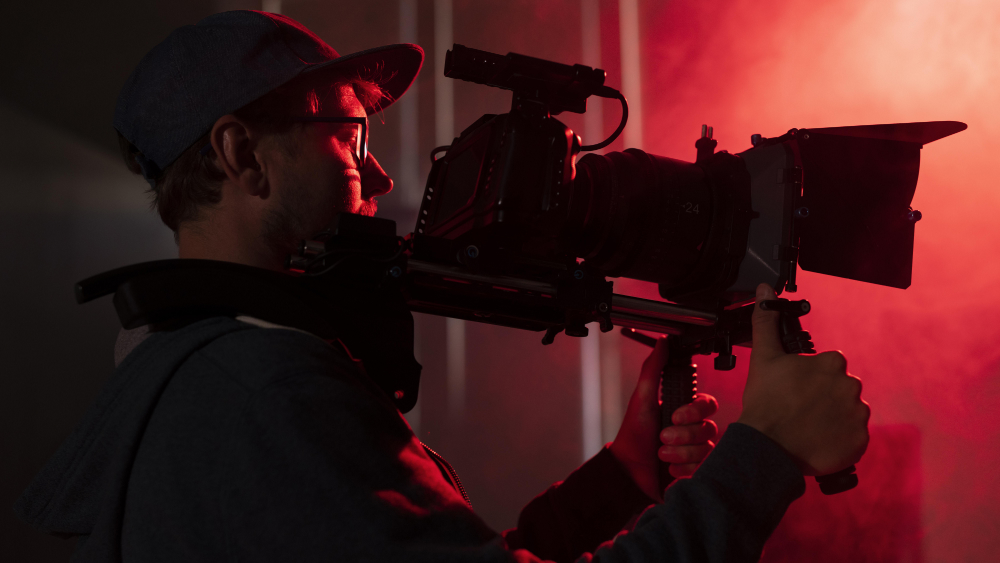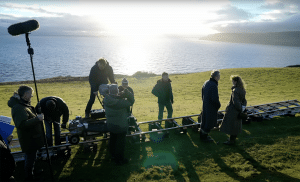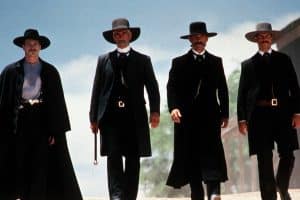Aspect ratios serve both practical and artistic purposes, so choosing the right one can set the tone for your project.
Aspect ratios are so embedded in the technology we use and the media we see that they largely go unnoticed, but when you step behind the camera, the aspect ratio is one of those things you need to be aware of. Aspect ratio, as it relates to video, is the relationship between the width and height of the image. You’ll see it expressed as two numbers that are separated by a colon, such as 4:3 or 16:9. The former is a more outdated aspect ratio that’s much closer to a square — most CRT TVs use this — while the latter is the modern standard for most consumer electronics and media.
Deciding which aspect ratio to use for your next project is both a practical and an artistic decision that can dictate the cameras and lenses you use as well as how you frame your shots. Below, we’ll dive into the different aspect ratios, their benefits, and how to choose them for your project.
A Brief History on the Evolution of Aspect Ratios
The aspect ratio has evolved over the years as both technology and artistic preferences have changed. Some of the most notable ones include the following:
4:3 (or 1.37:1): This is the “Academy Ratio,” which was standard during the early sound era of cinema. Many classic films from the 1930s and 1940s were shot in this format. It’s also the same aspect ratio of older television sets, which is why you’ll see older shows shot before the 2000s with large black bars on either side of the footage.
1.85:1: This is a common widescreen aspect ratio in American cinema, and it’s used both in movies and TV, though mostly the latter. This aspect ratio is very close to the 16:9 (1.78:1) aspect ratio, which is the standard aspect ratio for most modern consumer electronics like TVs and phones, but it is just a tad wider. Footage shot in this aspect ratio shows up in 16:9 screens with narrow black bars.
2.39:1 (previously 2.35:1): Known as “CinemaScope”or “anamorphic widescreen format,” this is a very wide format and has been used for many epic and adventure films. While the term “cinematic” gets thrown around a lot, this aspect ratio embodies that quality more than the others, with the seemingly endless widescreen offering expansive views that sell the vastness of the grand setting. The panoramic views are immersive for the viewer, but there are a few setbacks. To achieve this look, filmmakers have to use anamorphic lenses, which can struggle to produce tack-sharp focus up close and blur the edges of the frame. Though these disadvantages can be used to your advantage by making the blurred edges an artistic choice, anamorphic lenses may not be the best for every scene.
Another slight issue is that footage shot with an anamorphic lens requires a bit of work, as you’ll first have to de-squeeze the footage to make it look like it’s supposed to. That’s why you’ll see black bars sandwiching footage with this ratio; something needs to fill the space left behind by the stretched-out footage. TVs and monitors with a 21:9 aspect ratio are the closest screens that can display footage with this aspect ratio without the use of large black bars — you might still see very narrow black bars.
Artistic Implications
While aspect ratio can seem purely a purely functional aspect of filmmaking, directors and cinematographers choose aspect ratios based on the storytelling needs of their films. For example, when it comes to composing a shot, a wider aspect ratio can lend itself well to landscapes and grand spectacles, whereas a narrower one might create a sense of intimacy or confinement. In some films, multiple aspect ratios are used throughout the film to make certain scenes look better. Other times, a filmmaker may play around with the aspect ratio to make a statement.
One great example of this is Wes Anderson‘s The Grand Budapest Hotel, which switches between three aspect ratios. Each aspect ratio corresponds to one of the three periods in history the film takes place in: the 1.37:1 aspect ratio is used for the scenes in the 1932, 2.40:1 was used for scenes that happened in the late 60s, and 1.85:1 was used for modern scenes. What this did was show scenes in the aspect ratios that were most popular at the time, taking the period accuracy up a notch.
Choosing the Right Aspect Ratio (and How to Change It)
When it comes to filming your project, your choice of aspect ratio will boil down to the camera you’re using. A camera’s aspect ratio is directly tied to the dimensions of the image sensor, but don’t be disheartened. Many modern cameras have the option to choose alternative aspect ratios in addition to the native aspect ratio, giving you a lot more tools as a filmmaker. Using a non-native resolution can save you the hassle of cropping it later in post, but there is less room for error as well. If you’re not set on a particular aspect ratio, it may be best to shoot with the native aspect ratio and crop it later when you’ve made up your mind.
If your vision calls for a 2.39:1 aspect ratio, then you need an anamorphic lens. Anamorphic lens are expensive, but anamorphic lenses have become more affordable in recent years, with many anamorphic lenses now available for most consumer video cameras. You can even get anamorphic lenses for your phone.
What the anamorphic lens does is squeeze the image, so don’t freak out when you first see it. Though popular NLEs have the capability to de-squeeze footage, you can also use a ratio calculator to de-squeeze the footage. The extra work can be a pain, but it’ll be worth it. Even if you only use the anamorphic lens for outdoor scenes or B-roll shots, the wide, panoramic perspective immediately immerses the viewer.
Play with Your Aspect Ratio
In the end, the aspect ratio is a tool filmmakers use to shape the viewer’s experience, much like color, sound, and cinematography. As with all aspects of filmmaking, it’s a blend of technical constraints, historical evolution, and artistic vision. Play around with aspect ratios offered by your camera, or tweak it in post. What’s important to remember is that there is no right or wrong answer here.
Cover image via Freepik.
Looking for filmmaking tips and tricks? Check out our YouTube channel for tutorials like this . . .




